J.K. Ullrich's Blog, page 26
August 31, 2015
“Dystopies climatiques”: some things just sound cooler in French
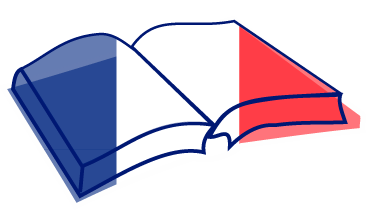
“J.K. Ullrich est romancière.” Can I put that on my next book jacket, just to be pretentious?
The cli-fi piece I wrote for The Atlantic has gone international! French publication Libération picked it up last weekend. My French language skills are currently limited to gist translation of old Edith Piaf songs, but I like the sound of “J.K. Ullrich est romancière.” Romancière is a much more elegant term than “obscure-but-determined indie author”, don’t you think? Back on this side of the pond, the Dayton Daily News also featured an excerpt from my article. It’s exciting to see my work spread roots and grow!

August 30, 2015
The Real-Life Nilak? Company Proposes Shipping Water to Drought Zone
Back in February I wrote a post about the Cassandra curse of sci-fi writers: when a concept you’ve imagined is unexpectedly mirrored in reality. This weekend brought perhaps the most uncanny such moment I’ve ever experienced. According to USAToday, a private company plans to ship fresh water from Alaska to California, just like the fictional Nilak company in my novel Blue Karma.
Alaska Bulk Water holds rights to nine billion gallons of water in Blue Lake on Baranof Island, and the company’s CEO says municipal and industrial customers in California–where the epic drought persists into its fourth consecutive year–are eager to buy the imported H2O. The scheme presents new logistical challenges, such as creating infrastructure to offload the product at its destination, and water experts argue the idea is economically unsound. But if successful, the scheme could allow shipment of up to ten million gallons per month via tanker.

A private company proposes shipping fresh water from this lake in Alaska to drought-stricken California.
This is one of the reasons I opted to release Blue Karma as an eBook rather than pursue traditional publishing: I feared that by the time the story hit shelves, it would no longer read like environmental science fiction, but environmental realism! Imagine if Alaska Bulk Water’s ambitious model succeeds. How many other businesses would spring up to compete? What if locals resented the sale of their water, preferring to keep it for their community’s use? Would authorities step in to regulate the price of privately sold water, or would customers be at the mercy of market forces? I explored some of these ideas in Blue Karma, but I may get to watch them play out in reality sooner than I expected.

August 26, 2015
“From Captain Planet to Blue Karma”: my writing journey
 So how the heck did I become a writer? And what experiences shaped me into the kind of writer I am today? I’d never thought deeply about this question until the editor at SolaFide Publishing asked me to contribute a guest post discussing the lessons I’ve learned during my development as a writer. The resultant essay surprised me, revealing unacknowledged influences and a dream that took a quarter-century to reach fruition. It’s a quirky, geeky story–a journey from library essays to fan fiction to the agonies of institutionalized creative writing–but shares epiphanies I think all writers will appreciate. The piece just went up today, so check out “From Captain Planet to Blue Karma: One Writer’s Journey to Authorship” on the SolaFide Publishing blog!
So how the heck did I become a writer? And what experiences shaped me into the kind of writer I am today? I’d never thought deeply about this question until the editor at SolaFide Publishing asked me to contribute a guest post discussing the lessons I’ve learned during my development as a writer. The resultant essay surprised me, revealing unacknowledged influences and a dream that took a quarter-century to reach fruition. It’s a quirky, geeky story–a journey from library essays to fan fiction to the agonies of institutionalized creative writing–but shares epiphanies I think all writers will appreciate. The piece just went up today, so check out “From Captain Planet to Blue Karma: One Writer’s Journey to Authorship” on the SolaFide Publishing blog!

August 24, 2015
The Literature Museum: Sci-Fi and Sexism
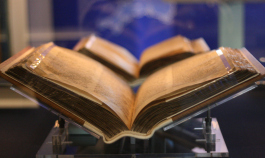 “Think of it as the literature museum,” my father told me when I was fifteen. I was a dually-enrolled high school student at the local college, and frustrated with some of the ideas I encountered in the curriculum’s so-called classic novels. Dad, a veteran English major himself, helped me contextualize the antiquated stories by likening them to historical artifacts, exhibited for what they can reveal about their time rather then their current relevance. Clearly not all readers had the benefit of this analogy. A recent op/ed piece on NewStatesman.com expresses shock and disgust at how many of the books on National Public Radio’s list of “Top 100 Science Fiction and Fantasy Books” contain sexist and racist material. While the author makes some valid observations, I think her outrage is overwrought and lacks perspective on what the list really means.
“Think of it as the literature museum,” my father told me when I was fifteen. I was a dually-enrolled high school student at the local college, and frustrated with some of the ideas I encountered in the curriculum’s so-called classic novels. Dad, a veteran English major himself, helped me contextualize the antiquated stories by likening them to historical artifacts, exhibited for what they can reveal about their time rather then their current relevance. Clearly not all readers had the benefit of this analogy. A recent op/ed piece on NewStatesman.com expresses shock and disgust at how many of the books on National Public Radio’s list of “Top 100 Science Fiction and Fantasy Books” contain sexist and racist material. While the author makes some valid observations, I think her outrage is overwrought and lacks perspective on what the list really means.
To caveat, I’ve always been a champion of feminist fiction. Growing up, my parents recognized the value of fictional role models and scoured bookstores for strong, smart heroines. These stories had a tremendous influence on me both as a woman and as a writer. I work hard to create powerful female characters in my own work. So I’m no stranger to criticizing sexism in fiction. However, most of the books the author critiques are from the mid-20th century. That’s almost 75 years ago. Our ideas have undergone drastic changes in that time, which makes the author’s outrage almost comical: “a book from the 1950s that marginalizes women and has no black characters?! GASP!” I wonder if she would ban a Civil War-era story like The Adventures of Huckleberry Finn for its images of racism, or take umbrage at Jane Austen’s novels because her characters obsess over finding husbands. All fiction is a product of its society. Books are time capsules, reflecting past societies whose values we may find antiquated to the point of offense. We cannot judge them retroactively, only view them in historical context.
Perhaps the author’s real complaint lies with these novels’ inclusion on a list of “top” science fiction. Any ranking of creative works is subjective (case in point: how did the Harry Potter books not make this list?!) and often reflects the most popular or influential examples rather than those with themes acceptable to contemporary audiences. This is likely the case here, as readers voted on their favorite titles. Contrary to what the op/ed claims, I found a surprising number of the books represent positive female characters. There’s Margaret Atwood’s feminist sci-fi classic The Handmaid’s Tale, Neil Gaiman’s diverse and charming Neverwhere, and Carl Sagan’s Contact, which centers on the work of a female astrophysicist. I noted several other titles that, if not outrightly feminist, don’t perpetuate sexist themes.
Does the list also include some books that modern readers, including myself, would find offensive? Certainly. But what the list really shows is the shift in our visions and values over a century. In that light, the op/ed’s outrage seems almost as tiresome and contrived as the ideas in the stuffy old books it condemns. Those dated novels are simply exhibits in my dad’s imaginary “literature museum”: tools of thought that seem primitive to our eyes now, but provided an important step in the evolution of our culture and the stories it tells.

August 22, 2015
Story Fuel: Realizing the Space Elevator
 One of the key technologies in my upcoming book The Darksider is a space elevator. The one in my story is pure invention (albeit a well-researched and hopefully plausible one) but a Canadian company plans to make this science fiction staple a reality. Thoth Technology Inc just obtained patents a freestanding, inflatable tower with an electrical elevator inside that will carry astronauts over twelve miles. Vehicles will launch into orbit from the top, eliminating atmospheric drag and saving more than 30% of the fuel used with traditional rockets.
One of the key technologies in my upcoming book The Darksider is a space elevator. The one in my story is pure invention (albeit a well-researched and hopefully plausible one) but a Canadian company plans to make this science fiction staple a reality. Thoth Technology Inc just obtained patents a freestanding, inflatable tower with an electrical elevator inside that will carry astronauts over twelve miles. Vehicles will launch into orbit from the top, eliminating atmospheric drag and saving more than 30% of the fuel used with traditional rockets.
Conventional space elevator concepts rely on cables to transfer cars between Earth and space, but the International Academy of Astronautics assesses a material strong enough to support itself at such tremendous heights—such as diamond filaments and carbon nanotubes, two proposed ideas—probably won’t be available until the 2020s. Thoth’s design freestanding structure will only reach 20km instead of extending to geostationary orbit, thus avoiding the tether issue. The tower could also do double duty as a wind energy generator.
After over a century in human imagination—many audiences first encountered the idea of a space elevator in Arthur C. Clarke’s 1979 novel The Fountains of Paradise, but a Russian scientist actually put forth the concept in 1895—it will be exciting to see the space elevator finally realized. Improved access could revolutionize our exploration of the solar system and beyond. And it would undoubtedly create a huge draw for tourists: going to the top of the Eiffel Tower, the Empire State Building, or the Burj Khalifa will seem pedestrian compared to ascending a twelve-mile high “space needle”. No doubt the view would be worth twelve miles of elevator muzac!
Read more about Thoth Technologies’ space elevator from The Guardian.

Twelve Miles of Muzac? Canadian Company Gets Space Elevator Patent
 One of the key technologies in my upcoming book The Darksider is a space elevator. The one in my story is pure invention (albeit a well-researched and hopefully plausible one) but a Canadian company plans to make this science fiction staple a reality. Thoth Technology Inc just obtained patents a freestanding, inflatable tower with an electrical elevator inside that will carry astronauts over twelve miles. Vehicles will launch into orbit from the top, eliminating atmospheric drag and saving more than 30% of the fuel used with traditional rockets.
One of the key technologies in my upcoming book The Darksider is a space elevator. The one in my story is pure invention (albeit a well-researched and hopefully plausible one) but a Canadian company plans to make this science fiction staple a reality. Thoth Technology Inc just obtained patents a freestanding, inflatable tower with an electrical elevator inside that will carry astronauts over twelve miles. Vehicles will launch into orbit from the top, eliminating atmospheric drag and saving more than 30% of the fuel used with traditional rockets.
Conventional space elevator concepts rely on cables to transfer cars between Earth and space, but the International Academy of Astronautics assesses a material strong enough to support itself at such tremendous heights—such as diamond filaments and carbon nanotubes, two proposed ideas—probably won’t be available until the 2020s. Thoth’s design freestanding structure will only reach 20km instead of extending to geostationary orbit, thus avoiding the tether issue. The tower could also do double duty as a wind energy generator.
After over a century in human imagination—many audiences first encountered the idea of a space elevator in Arthur C. Clarke’s 1979 novel The Fountains of Paradise, but a Russian scientist actually put forth the concept in 1895—it will be exciting to see the space elevator finally realized. Improved access could revolutionize our exploration of the solar system and beyond. And it would undoubtedly create a huge draw for tourists: going to the top of the Eiffel Tower, the Empire State Building, or the Burj Khalifa will seem pedestrian compared to ascending a twelve-mile high “space needle”. No doubt the view would be worth twelve miles of elevator muzac!
Read more about Thoth Technologies’ space elevator from The Guardian.

August 17, 2015
Recent Reads: “Dawn” by Octavia Butler
As a lifelong sci-fi geek, I thought I’d seen every variant of alien contact narrative the genre had to offer, from the invasion epics to the misadventures of benign visitors to thinly veiled social allegories. Even the enjoyable ones often rely on predictable tropes. But “Dawn”, the first installment in Octavia Butler’s “Xenogenesis” trilogy, captivated me from the first pages with a vision unlike any other I’ve encountered.
 Lilith Ayapo awakens to discover the final world war ended centuries ago…and the human race along with it. She’s survived as a specimen on board an extraterrestrial ship. Her captors, the equanimous Oankali, call themselves traders, and their wares are their genes. They blend their DNA with that of other species they encounter, conferring advantages like improved health and longevity while propagating their own traits. With Lilith as their ambassador to the others they rescued, the Oankali plan to reintroduce homo sapiens to Earth. Lilith doesn’t completely trust her new acquaintances, but learns to interact with them as an individual. When she begins awakening other humans, however, dangerous group dynamics take hold. Not everyone is willing to accept the aliens, or their plan to alter the future of humankind.
Lilith Ayapo awakens to discover the final world war ended centuries ago…and the human race along with it. She’s survived as a specimen on board an extraterrestrial ship. Her captors, the equanimous Oankali, call themselves traders, and their wares are their genes. They blend their DNA with that of other species they encounter, conferring advantages like improved health and longevity while propagating their own traits. With Lilith as their ambassador to the others they rescued, the Oankali plan to reintroduce homo sapiens to Earth. Lilith doesn’t completely trust her new acquaintances, but learns to interact with them as an individual. When she begins awakening other humans, however, dangerous group dynamics take hold. Not everyone is willing to accept the aliens, or their plan to alter the future of humankind.
Although the plot is largely unadorned with twists and turns, Butler’s mastery of human psychology creates absorbing drama. Lilith is an empathetic heroine with keen powers of observation. We share her initial revulsion at the Oankali, her evolving curiosity about their world, and her ruthless determination to prepare the other humans for a primitive lifestyle on Earth. In some ways, “Dawn” is really a survival story, exploring the physical and emotional resilience of the nearly extinct human species. The inevitable question of biological humanity versus compassionate humanity becomes a bit heavy-handed towards the end, but it doesn’t detract from the narrative’s impact. Sci-fi fans will enjoy the introspective take on the first contact theme, while readers who might otherwise eschew a book about aliens will appreciate Butler’s quietly epic examination of the human spirit.

August 15, 2015
“Can books save the planet?” My article for The Atlantic
 If you’re interested in literature, STEM education, environmentalism, or just want to look at a picture of Jon Snow from “Game of Thrones” (yes, some culture critics argue the presence of cli-fi themes in George R.R. Martin’s fantasy series) check out the article I just wrote for The Atlantic about the growing popularity of cli-fi and its expansion into college classrooms. Special thanks to the people interviewed, who were kind enough to share their thoughtful commentary on the topic!
If you’re interested in literature, STEM education, environmentalism, or just want to look at a picture of Jon Snow from “Game of Thrones” (yes, some culture critics argue the presence of cli-fi themes in George R.R. Martin’s fantasy series) check out the article I just wrote for The Atlantic about the growing popularity of cli-fi and its expansion into college classrooms. Special thanks to the people interviewed, who were kind enough to share their thoughtful commentary on the topic!

August 11, 2015
Top 5 Wednesday: Favorite Required Reading
 There’s something oxymoronic about this topic: “favorite” and “required” don’t usually go together for me. I grew up a bibliophile and usually had several reads in progress at any given time, but the moment someone made a book mandatory, it became onerous (on at least one occasion I threw a screaming fit at being forced to read a novel not of my own choosing). However, reading lists introduced me to a few gems I’m happy to share with you on this Top 5 Wednesday. I confined my selections to formal school reading lists, as my various book discussion groups often chose titles by committee and therefore the reading wasn’t truly mandatory. Without further ado, here’s this rebel’s favorite required reading.
There’s something oxymoronic about this topic: “favorite” and “required” don’t usually go together for me. I grew up a bibliophile and usually had several reads in progress at any given time, but the moment someone made a book mandatory, it became onerous (on at least one occasion I threw a screaming fit at being forced to read a novel not of my own choosing). However, reading lists introduced me to a few gems I’m happy to share with you on this Top 5 Wednesday. I confined my selections to formal school reading lists, as my various book discussion groups often chose titles by committee and therefore the reading wasn’t truly mandatory. Without further ado, here’s this rebel’s favorite required reading.
Brave New World, by Aldous Huxley
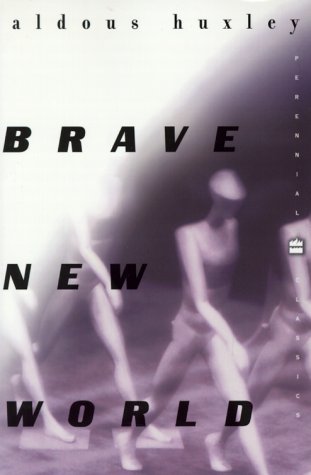 One of my favorite required books started out as my most loathed. My middle school thought it would look prestigious on the 8th grade reading list, but at age thirteen I thought it was the dullest and most pompous book I’d ever read. I curled my lip at it whenever I passed it in the bookstore and felt very worldly in proclaiming my disdain for Aldous Huxley. Five years later, I encountered my nemesis in a college class. A less neurotic student might have fudged the assignment, but my Hermione Granger-like obsession with top grades drove me to re-read the book. And I’m so glad I did, because I loved it. I could hardly believe it was the same story. By eighteen I’d matured enough to appreciate the book, but without that class, I would continued snubbing it forever. Thanks, Professor Trethaway!
One of my favorite required books started out as my most loathed. My middle school thought it would look prestigious on the 8th grade reading list, but at age thirteen I thought it was the dullest and most pompous book I’d ever read. I curled my lip at it whenever I passed it in the bookstore and felt very worldly in proclaiming my disdain for Aldous Huxley. Five years later, I encountered my nemesis in a college class. A less neurotic student might have fudged the assignment, but my Hermione Granger-like obsession with top grades drove me to re-read the book. And I’m so glad I did, because I loved it. I could hardly believe it was the same story. By eighteen I’d matured enough to appreciate the book, but without that class, I would continued snubbing it forever. Thanks, Professor Trethaway!
To Kill A Mockingbird, by Harper Lee
 Like most readers of this American classic, I first encountered it on a school reading list. Since then I’ve read it at least twice more. At the risk of sounding like an unimaginative, cliched English major, it really is one of my favorite books of all time. (Confession: I haven’t yet read “Go Set A Watchman” for fear of ruining the original story in my head.)
Like most readers of this American classic, I first encountered it on a school reading list. Since then I’ve read it at least twice more. At the risk of sounding like an unimaginative, cliched English major, it really is one of my favorite books of all time. (Confession: I haven’t yet read “Go Set A Watchman” for fear of ruining the original story in my head.)
The Blue Sword, by Robin McKinley
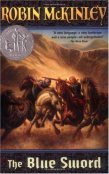 This swashbuckling tale of desert tribes and sorcery was a favorite in my family for years before I bumped into it my senior year of university, in a Children’s Lit seminar. I wouldn’t categorize it as a children’s story, but I welcomed the excuse to read it again. Of course, the class also tried to spoil the book for me by pairing it with a critical essay painting the heroine is a passive instrument of fate rather than a butt-kicking warrior girl who discovers her magical heritage. Really, why can’t academics just enjoy a good story and leave it alone?
This swashbuckling tale of desert tribes and sorcery was a favorite in my family for years before I bumped into it my senior year of university, in a Children’s Lit seminar. I wouldn’t categorize it as a children’s story, but I welcomed the excuse to read it again. Of course, the class also tried to spoil the book for me by pairing it with a critical essay painting the heroine is a passive instrument of fate rather than a butt-kicking warrior girl who discovers her magical heritage. Really, why can’t academics just enjoy a good story and leave it alone?
The Big Sleep, by Raymond Chandler
[image error]Oh, 20th Century Popular Lit. The only class with the guts to take a critical approach to Harlequin Romance novels. Smuggling pink paperbacks out of a used bookstore wasn’t the highlight of my college career, but it was worth it, because after the romance segment we turned to mystery novels. Thus I became acquainted with Raymond Chandler. His lush descriptions and edge storytelling influenced my own writing style. It also prompted me to explore the noir fiction genre, inspiring a series of mystery novels I will one day put on paper.
The Botany of Desire, by Michael Pollan
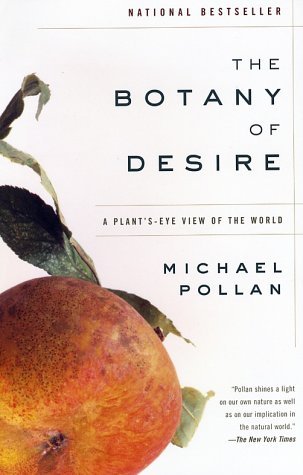 No one said this list had to be fiction! I read this book for an ethnobotany class and it changed my opinion of non-fiction forever. Pollan’s elegant prose reads like poetry, tenderly revealing the fascinating secrets of plants. It made me realize that scientific writing doesn’t have to be a technical snoozefest; it can be dynamic, descriptive, and as deeply engaging as any flight of imagination. This is the book that made me want to become a science writer.
No one said this list had to be fiction! I read this book for an ethnobotany class and it changed my opinion of non-fiction forever. Pollan’s elegant prose reads like poetry, tenderly revealing the fascinating secrets of plants. It made me realize that scientific writing doesn’t have to be a technical snoozefest; it can be dynamic, descriptive, and as deeply engaging as any flight of imagination. This is the book that made me want to become a science writer.
Top 5 Wednesday is the creation of Lainey over at Goodreads. Check out the group and join the other “Wednesday-ers“!

August 4, 2015
Story Fuel: Biological Building Blocks Confirmed on Comet
Philae may have gone silent again, but the little lander lost managed to transmit some intriguing data in its most recent dispatch from Comet 67P: namely, the presence of chemical elements necessary for carbon-based life. Discovery of these molecules suggest a comet impact may have delivered for the ingredients of primordial Earth life eons ago.

“This is no cave!” And Philae’s discovery of biological chemicals on an asteroid is no giant predatory space worm, but exciting nonetheless.
In its latest issue, the journal Science reported analysis from two of Philae’s pre-programmed experiments, COSAC (Cometary Sampling and Composition) and Ptolemy, that carried out some research before the lander went offline. COSAC collected surface dust the lander stirred up during its first touchdown and identified 16 organic compounds, including several rich in nitrogen and carbon. Four of these—propionaldehyde, acetone, methyl isocyanate, and acetamide—have never been detected in comets before. Acetamide particularly excited scientists because it produces key molecules, such as like amino acids and DNA bases.
Meanwhile, Ptolemy’s sample of the comet’s coma (the haze of gases, ice, and dust surrounding its core) found mostly water vapor and carbon dioxide, but also precursors of formaldehyde. Most of us probably associate formaldehyde with specimens floating in jars, but it’s also important in biological chemistry, producing simple sugars like ribose. Now that Philae’s data has confirmed the existence of organic molecules in cometary ice, future experiments may simulate how they combine to form peptides and other chemical building blocks.
Mission personnel hope moving the Rosetta orbiter closer to Philae may allow them to re-establish communication with the lander, but right now 67P is approaching perihelion (the part of its orbit closest point to the sun) and flying too close might condemn Rosetta to the fate of Icarus. Later this year, when things cool off, the team may be able to link with Philae again and gather more data on the comet’s surprising composition.
Visit the Royal Chemistry Society for an more detailed chemical analysis of Philae’s new data, or read a comprehensive overview from Popular Mechanics.




